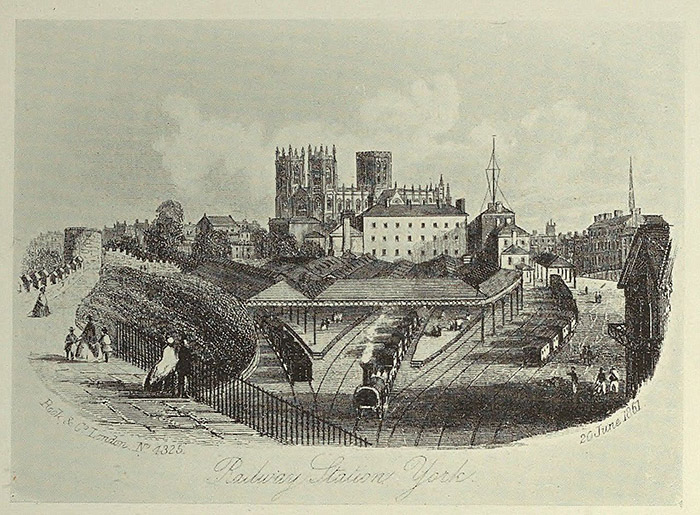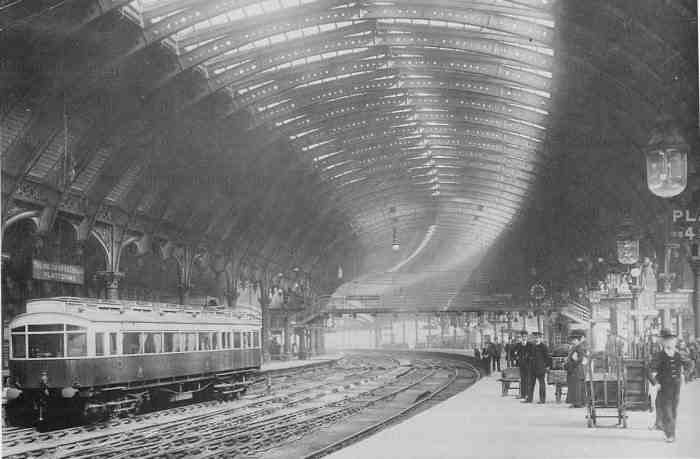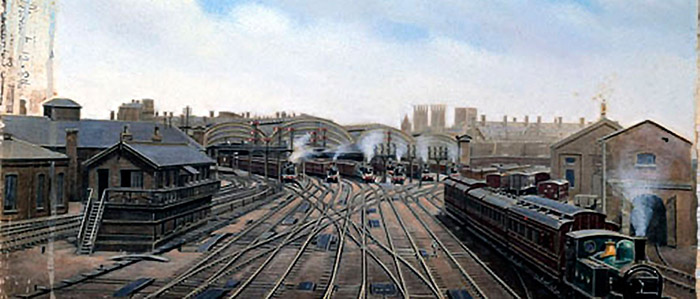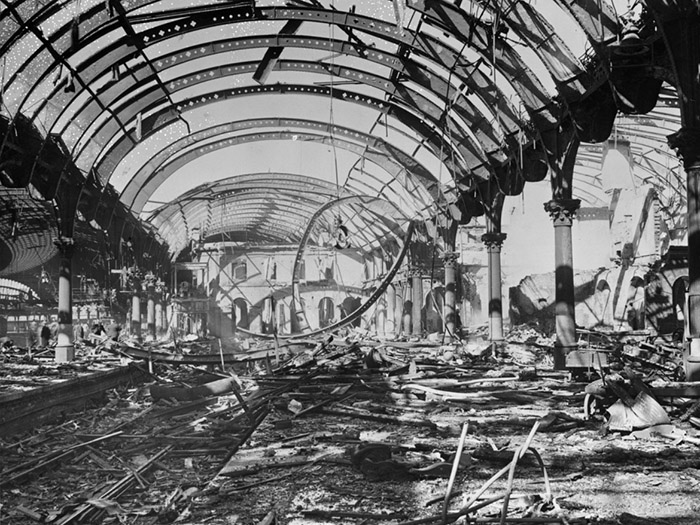

 STUART JORDAN looks into the history of this important interchange station.
STUART JORDAN looks into the history of this important interchange station.
The York and Midland Railway opened in 1839, to connect Yorkshire to the growing railway network in England. The line connected York and with the Leeds and Selby Railway and then expanded across the north-east before merging with the Leeds Northern Railway and the York, Newcastle & Berwick Railway to form the North Eastern Railway in 1854.

The second York station, built inside the city walls.
The first station in York was built outside the city walls and was a temporary wooden structure. A second station, built in an Italianate style, was constructed inside the city walls. However, this terminus became an inconvenience – York became a stop for London to Newcastle trains, which had to reverse out of the station to continue their journey.
To solve this problem a new through station was designed for York, outside the city walls and near to the location of the original temporary terminus. This station was designed for the North Eastern Railway by the Architects Thomas Prosser and William Peachey. The original line through the walls was used as carriage parking.
The curved train shed is 800ft long and the roof is 42 feet above the platforms, held up by three rows of cast-iron columns, supporting the curved ribs holding up the roof. Every third rib was supported by a column, with the other two supported on curved girders on the same curve as the platforms.

The current York Station around the turn of the 20th Century, showing the curved roof.
The station opened in 1877 with the first train leaving at 5:30am on June 25th, bound for Scarborough. At the time, it was the largest railway station in the world with thirteen platforms. The location of the city, roughly equidistant between London and Edinburgh, meant that the station was an important interchange – which brought businesses to the region leading to prosperity and employment. The Royal Station Hotel opened next to the station in 1878, employing many locals.

York Station circa 1910.
The station was heavily bombed during World War 2, with damage not being completely repaired until 1947. The track layout was remodelled in 1988 in preparation for the electrification of the East Coast Main Line. A new signalling centre was built to consolidate signalling in the area from several other boxes.

Damage to York Station by bombing in 1942.
All platforms except 9-11 are under the curved roof. These platforms are accessed by a footbridge, which also connects the station with the National Railway Museum, housed in the former motive power depot and goods station. In March of 2020, £14.5m of funding was secured by City of York Council to improve the area around the station, including the creation of a pedestrianised area at the front of the station.
York Station currently serves around nine million passengers a year, on services provided by six different franchises: